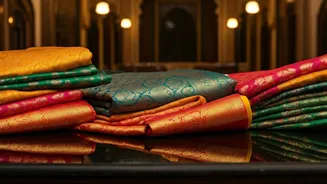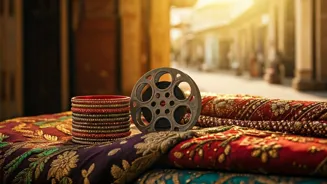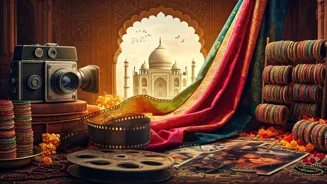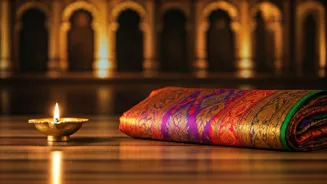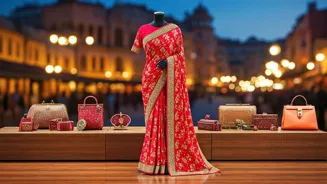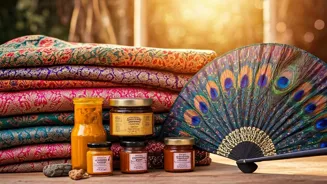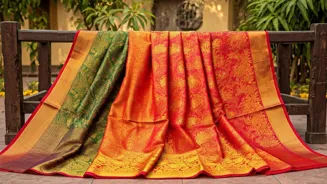Discover the allure of traditional Indian jewelry & 6 timeless pieces to invest in! Explore the beauty, heritage, and value of these iconic adornments that transcend time and celebrate cultural narratives.
From the classic Maang Tikka to the regal Rani Haar, each piece is a symbol of grace and tradition. Delve into the world of Indian craftsmanship and history, and find out how these
Traditional Indian jewelry isn't just about adornment; it's a celebration of heritage, artistry, and enduring value. Passed down through generations, these pieces embody cultural narratives and intricate craftsmanship, making them not just beautiful accessories, but also wise investments too.
If you're looking to add timeless elegance to your collection, consider these six essential pieces of traditional Indian jewelry. These pieces offer a blend of tradition, beauty and long-term value.
Each one holds its own special place in the rich tapestry of Indian culture, making them worthwhile investments.
A classic Maang Tikka symbolizing marital status and good fortune, reflects India's artistic heritage
First on the list is the classic Maang Tikka. This forehead ornament, traditionally worn at the center parting of the hair, symbolizes marital status and more generally, good fortune.
A well-crafted Maang Tikka, especially one adorned with precious stones like emeralds, rubies, or uncut diamonds (polki), can instantly elevate any ethnic ensemble. Look for intricate designs and quality craftsmanship when picking one for yourself.
Maang Tikka is a reflection of India's artistic heritage. Its enduring appeal makes it a valuable addition to any jewelry collection and a timeless statement of grace.
Jhumkas: Bell-shaped earrings for versatile style and cultural charm
Next, the ever graceful Jhumkas. Jhumkas are bell-shaped earrings that cascade downwards, often featuring intricate filigree work and embellishments. From delicate gold jhumkas to vibrant, gemstone-studded ones, these earrings offer versatility for different occasions.
They pair perfectly with sarees, salwar suits, and even contemporary outfits, adding a touch of bohemian charm. They also have a captivating appeal. Investing in a pair or two of well-crafted Jhumkas guarantees both style and enduring worth, echoing tales of cultural traditions.
A Rani Haar, a symbol of opulence and elegance, crafted with precious gems, fit for royalty
Then comes the Rani Haar. A Rani Haar, or "Queen's Necklace," is a long, opulent necklace, often multi-layered and adorned with elaborate pendants. Traditionally worn by royalty, it exudes grandeur and elegance.
Rani Haars crafted with precious metals and gemstones, whether diamonds, pearls, or other gems, are investment-worthy pieces that can be passed down as heirlooms. This piece is fit for royalty.
It adds an unmatched regal touch to all and is also an emblem of timeless beauty passed down the generations, holding its value and charm.
Traditional Kada symbolizes strength, prosperity, and cultural significance
Now comes the Kada or the bangle. A Kada is a sturdy, often ornate bracelet, that can be worn single or in stacks. Traditionally made of gold or silver, Kadas feature intricate carvings, enamel work, or gemstone settings.

They represent strength and prosperity and are considered an essential part of bridal jewelry. A well-crafted Kada lasts forever! Consider a solid gold Kada with intricate detailing for a lasting investment that adds cultural significance to your collection, making a big fashion statement too.
Traditional Indian nose ring symbolizes beauty and culture
Next comes the timeless Nath. A Nath, or nose ring, is a significant piece of traditional Indian jewelry, varying in style across different regions. From delicate hoops to elaborate designs with pearl and gemstone embellishments, Naths symbolize beauty and marital status.
Investing in a Nath crafted with precious metals and stones can be a valuable addition to your collection, especially if it reflects a specific cultural heritage. The Nath is like nothing else. The Nath is a timeless piece.
Delicate payals add elegance to traditional outfits
Lastly, the Payal or Anklet. Payals, or anklets, are delicate chains worn around the ankles, often adorned with tiny bells or charms. These add a subtle yet enchanting touch to any traditional outfit. Payals made of silver are considered auspicious, while gold Payals offer a more luxurious feel.
Look for intricate designs and durable construction to ensure your investment lasts. It's a piece which can add touch of elegance. They are a great purchase for anyone looking to invest in traditional Indian jewelry.
Invest wisely in authentic Indian jewelry for cultural value and enduring beauty
Investing in traditional Indian jewelry requires careful consideration. Always look for authenticity and craftsmanship. Genuine gemstones, properly hallmarked gold, and intricate detailing are hallmarks of quality pieces.
Consider the versatility of the piece and how well it aligns with your personal style. Remember that traditional Indian jewelry is more than just ornamentation; it's an investment in culture, artistry, and enduring value.
Choosing the right pieces ensures you own not only beautiful accessories but also tangible assets that can be treasured for generations. Happy shopping! Traditional jewelry serves as a wearable piece of art that connects you to the roots.
Check authentication when buying for long-term value
When buying these pieces, make sure to check their authentication for long term value.
Invest in authentic handcrafted jewelry for lasting beauty
Investing in authentic and handcrafted jewelry ensures its beauty and longevity.

